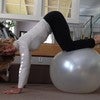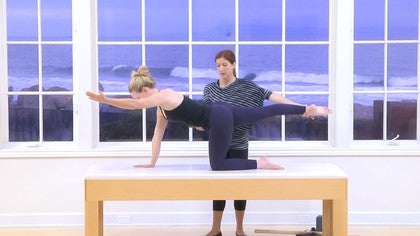Sacroiliac Dysfunction
Sherri Betz
Tutorial 2037
Watch this Tutorial

Michele P
5 people
like this.
This type of educational video is exactly what makes Pilates Anytime an invaluable tool. I'm continually correcting my clients (and my own) SI obliquities. I love this progression of realignment tools and exercises to then support and maintain sacroiliac stability. If we can't get to Florida, how nice that Florida can come to us. Thank you Sherri!!!
7 years ago
Debbie Wilson,
I am referring to Posterior Left and Anterior Right Ilial Torsion. I definitely do not expect Pilates teachers to identify sacral torsion (not impossible for them, but also not very easy to identify). The anatomical reference points are the Anterior and Superior Iliac Spines.
I am referring to Posterior Left and Anterior Right Ilial Torsion. I definitely do not expect Pilates teachers to identify sacral torsion (not impossible for them, but also not very easy to identify). The anatomical reference points are the Anterior and Superior Iliac Spines.
7 years ago
So happy to save you money, Deborah! I am always trying to put myself out of a job!
7 years ago
Hi Michele Place, I actually live in Santa Cruz, CA and own a studio called TheraPilates® Physical Therapy Clinic! Best of luck with stabilizing your pelvis!
7 years ago
this was very helpful!! Thanks so much! Many really great cues and explanations for the "why" ..are we wanting our clients to move in this way.. Because every moment of this Tutorial was so valuable, it would be great to have the camera filming from different angles. Sometimes you do this, and I wish for classes like this you would always do it. But I will watch this over and over anyways!
7 years ago
E.D. There is no correlation to the painful side or the "bad" side. The leg over the top of the stick is determined by the Ilium that is anteriorly rotated. i.e. If the Right ASIS is lower (closer to the foot) than the left, then the Right Leg goes over the top of the stick. Note: the right anterior ilial rotation is much more common than the left
7 years ago
Thanks for clarifying Sherri. I think this would really help a friend, who lives too far away from me to help her. So, to get the stick placement correct, is she best off following your advice to E.D., and looking for the lower ASIS? Is this best determined in standing or supine? She does see an osteopath - I assume they would be able to identify the iliac torsion so she would know how to proceed? Many thanks again.
7 years ago
I learned similar techniques from a PT, but I think these are even more effective. Comprehensive and well presented! Thank you
7 years ago
11-20 of 163
You need to be a subscriber to post a comment.
Please Log In or Create an Account to start your free trial.








































































